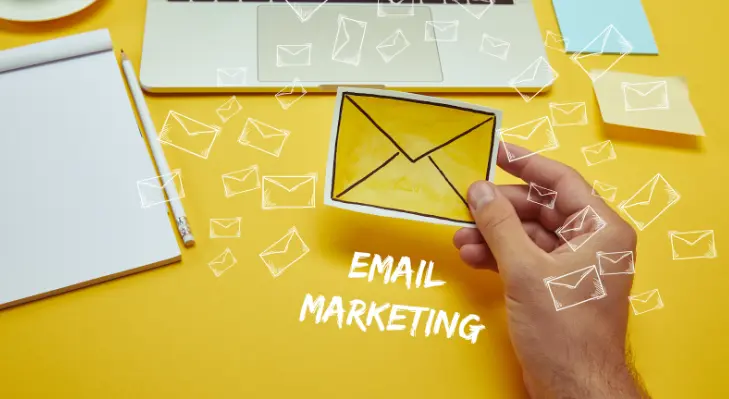Choosing the right email outreach platform isn’t just a nice-to-have; it’s the difference between wasting money and fueling real business growth. Done right, email outreach can deliver jaw-dropping returns, up to 4,200% ROI. And with 8 out of 10 buyers preferring to be contacted by email, it’s clear this channel isn’t going anywhere.
But here’s the catch: not all platforms are created equal. In this blog, we’ll walk through the must-know criteria, compliance essentials, and integration tips so you can invest wisely and turn outreach into lasting sales success..
Essential Features to Evaluate in Email Outreach Software
Before diving into vendor comparisons, it’s important to establish clear evaluation criteria that help you distinguish between average solutions and truly game-changing tools. When assessing your options, ensure the email outreach software you consider is capable of executing complex personalization, maintaining high deliverability rates, and integrating smoothly into your existing technology ecosystem, all without demanding advanced technical expertise.
Deliverability and Sender Reputation Management
Your emails won’t generate revenue sitting in spam folders. Look for platforms offering IP warming capabilities that gradually build your sender reputation over time. Domain authentication features should be built in, not optional add-ons that cost extra.
The best systems include real-time bounce handling and automatic list hygiene tools. These features prevent your reputation from taking hits when emails bounce back or hit inactive addresses. Without proper spam testing and content optimization, even perfectly crafted messages can end up filtered out.
Advanced Personalization and AI-Powered Content Creation
Generic emails don’t work anymore—prospects can smell mass-produced content from miles away. Dynamic merge tags that go beyond basic name insertion are table stakes in today’s competitive environment.
AI-generated subject lines and email copy variations can significantly boost open rates. Behavioral trigger-based personalization options allow you to tailor messages based on recipient actions, creating more relevant conversations. This level of customization often separates successful campaigns from forgettable ones.
Multi-Channel Integration Capabilities
Email alone won’t cut it in modern sales environments. LinkedIn and social media outreach synchronization features let you create cohesive campaigns across multiple touchpoints without juggling separate platforms.
SMS and voice calling integration features expand your reach when email isn’t getting responses. Cross-platform lead tracking and attribution ensure you’re not losing valuable prospect data between different communication channels. These integrations streamline your workflow and provide complete visibility into prospect interactions.
With those critical features in mind, your next step involves determining how much you should realistically invest to access these game-changing capabilities.
Budget Planning Strategies for Email Marketing Tools
Smart buyers don’t just look at sticker prices—they calculate true ownership costs, including hidden fees and long-term scalability requirements. Recent data reveals that 63% of marketers are planning to increase their marketing budgets, with almost 70% planning to increase their marketing automation budget. This trend suggests that email marketing tips focused on budget allocation are becoming increasingly important for strategic planning.
Cost-Benefit Analysis Framework
Per-contact pricing versus flat-rate subscription models each have distinct advantages depending on your sending volume. Calculate your expected monthly email volume and compare costs across different pricing structures before making decisions.
Hidden costs often include additional integrations, premium features, and overage fees that vendors don’t advertise upfront. Factor in these expenses when evaluating the total cost of ownership. ROI calculation methods should include both direct revenue attribution and efficiency gains from automation.
Scalability Considerations for Growing Businesses
Flexible pricing tiers and contact limit adjustments prevent painful migrations when your business expands. Best email outreach tools offer smooth upgrade paths without forcing you to completely restructure your campaigns.
Enterprise-grade features availability timelines matter if you’re planning significant growth. Migration costs and platform switching implications can be substantial, so choose systems that can grow with your needs rather than requiring replacement within two years.
While calculating your optimal budget is crucial, overlooking compliance requirements could result in costly fines that quickly erase any ROI gains—making regulatory adherence your next non-negotiable consideration.
Integration and Workflow Automation Essentials
Modern businesses don’t operate in silos, and neither should your email outreach strategies. Seamless data flow between systems prevents leads from falling through cracks while reducing manual data entry that wastes valuable time.
CRM and Marketing Stack Compatibility
Native integrations with popular CRM platforms like Salesforce, HubSpot, and Pipedrive eliminate data synchronization headaches. API flexibility and custom integration possibilities ensure you’re not locked into vendor-specific ecosystems.
Data synchronization and lead nurturing workflows should happen automatically without requiring constant monitoring. When systems talk to each other properly, your team can focus on strategy instead of administrative tasks that don’t generate revenue.
Advanced Automation and Drip Campaign Features
Behavioral trigger setups and conditional logic create sophisticated nurture sequences that respond to prospect actions. A/B testing capabilities for optimization help you continuously improve campaign performance without guesswork.
Performance analytics and conversion tracking provide actionable insights for future campaigns. These features help you understand what’s working and what isn’t, allowing for data-driven improvements that compound over time.
Once your automated workflows are running smoothly, you’ll need robust analytics capabilities to measure what’s working, identify optimization opportunities, and prove your email outreach ROI to stakeholders.
Emerging Trends and Future-Proof Features
Technology evolves rapidly, and you’ll want platforms that adapt to changing market conditions rather than becoming obsolete in two years. Invest in email outreach solutions that embrace emerging technologies while maintaining reliability and ease of use.
AI and Machine Learning Integration
Predictive send time optimization algorithms analyze recipient behavior patterns to determine optimal sending times. This technology can significantly improve open rates without additional manual effort from your team.
Automated content personalization and optimization features use machine learning to improve message relevance over time. Customer behavior prediction and segmentation capabilities help you target the right prospects with the right messages at the right times, maximizing campaign effectiveness through intelligent automation.
Understanding these future-focused features helps inform your final vendor selection process, where strategic evaluation methods can mean the difference between a successful long-term partnership and an expensive mistake.
Common Questions About Email Outreach Software Investment
1. Is email outreach software worth the investment for small businesses?
Yes, the return on investment for email outreach software is typically 3-5x higher than that of traditional marketing methods, making it a smart choice even for small businesses with tight budgets and limited resources.
2. How do I know if my current email outreach software needs upgrading?
You should consider upgrading your email outreach software if you notice key warning signs such as deliverability rates dropping below 95%, the absence of advanced automation capabilities, inadequate mobile optimization, or a lack of compliance features for regulatory standards.
3. What’s the difference between email marketing and email outreach software?
While they are related, email outreach software is specifically designed for cold outreach efforts and prospecting, employing advanced personalization techniques, whereas email marketing software primarily focuses on nurturing established subscribers and customers through targeted campaigns.
Final Thoughts on Email Outreach Software Investment
Choosing the right platform for your outreach efforts goes beyond simply reviewing feature lists. The ideal email outreach software can grow with your business and reliably deliver measurable improvements in your marketing results. Prioritize options that excel in deliverability, offer robust personalization, and provide seamless integration with the rest of your stack—all tailored to your requirements.
Bear in mind, too, that opting for the lowest-priced solution can increase your expenses over time once you factor in the drawbacks of poor performance and migration. Your potential clients prefer to be contacted via email, so choose tools that equip you to approach them effectively and professionally.
Also Read-Data Science Innovations Transforming the Fintech Landscape








